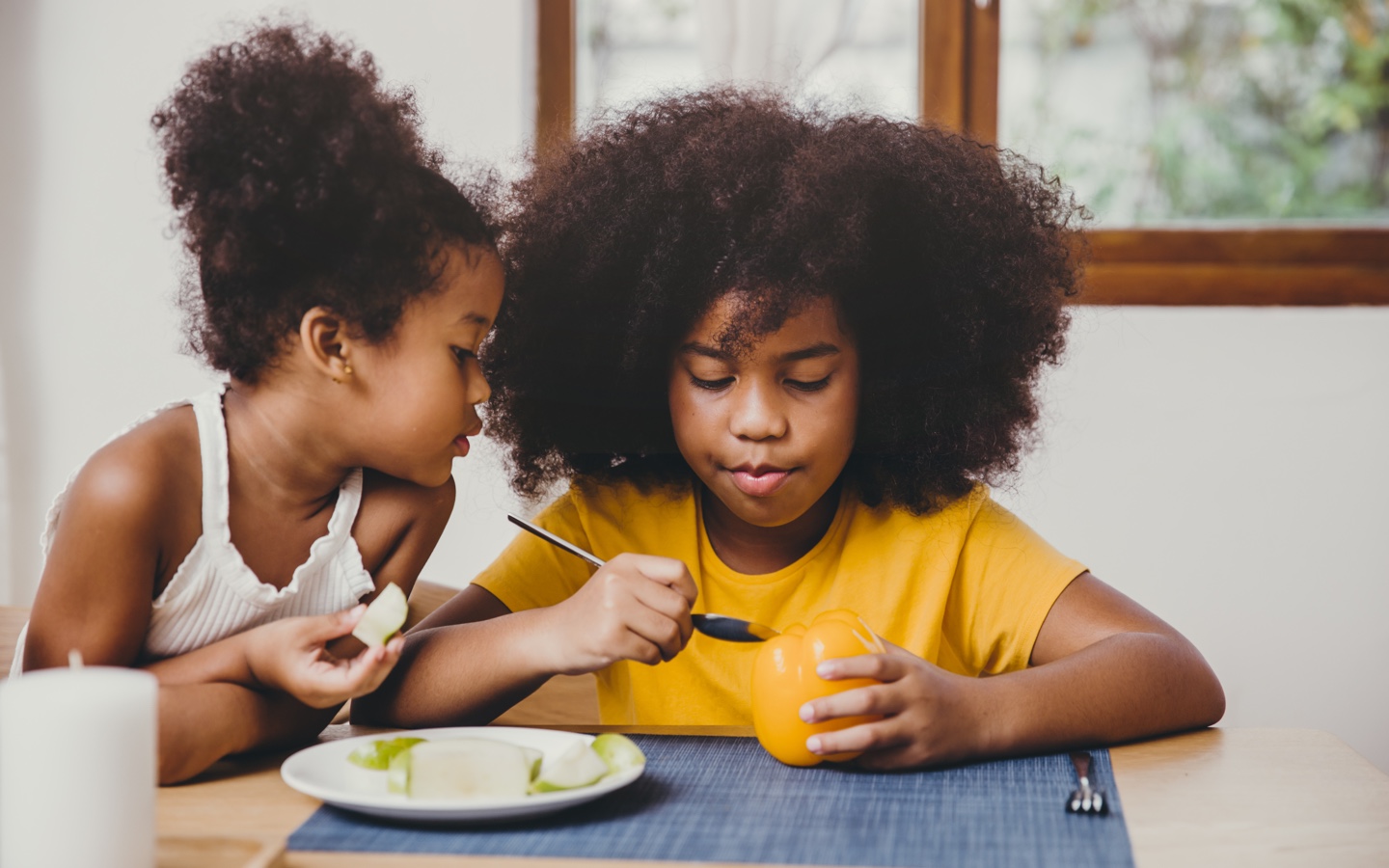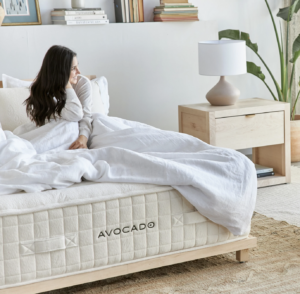It’s never been more important to raise the next generation to look proactively at the world’s environmental issues. These age-appropriate lessons will get the conversation started with your little ones.
Raising kids in 2020 is a wild ride. Now more than ever, I look at my role as a mother to two little ones from a broader perspective: What do I want to teach them? What does the world truly need to learn to make it a better place?
I watch Grey’s Anatomy with a glass of wine sometimes when my kids fall asleep early and I have a pile of laundry to fold. One night while I was watching, something Dr. Catherine Avery said stood out to me: “That’s how the world changes: good people raising their babies right.”
Maybe it’s naive to think it’s really that simple, but I decided to be more deliberate with my children’s in-home education. I started teaching them things about business, sustainability, politics, and religion, consent and bodily autonomy, economics and ethics. I wanted to ground them in the discussions that weren’t happening inside of classrooms but were critical to understanding life on earth.
What Is Environmental Science?
Environmental science is a pretty broad field that touches on how everything interacts and impacts our planet’s ecology. It’s not necessarily an educational category that focuses on ecology, but rather how the Earth’s systems work, and how they’re affected by environmental damage and hazards.
This science is meant to create a broader understanding of what sustainability truly looks like, because it’s part of the critical part of how we diagnose problems related to human activity on our planet.
By understanding how key systems on our planet work and what challenges they face, children can help be part of the solution for the problems they will inherit from a warming planet. The following exercises will help seed the next generation of engineers, modern inventors, and passionate advocates — the changemakers our planet needs.

Lesson 1 — Understanding How Pesticides Enter Our Food and Water Supply
Pesticides play a major role in many environmental issues, ranging from groundwater contamination to colony collapse disorder among bees, to a number of health issues linked to their use.
Often, what we can’t see on our food is out of sight and out of mind. This exercise will help illustrate just how much pesticides affect the food we consume, and how farms can adapt to a model that eliminates the need for pesticide use.
Understanding the Problem
Pesticides are used for a lot of really compelling reasons. When a pest decimates a crop, this threatens our food supply, and with seven billion people on the planet to feed, farm productivity is critical to our survival as a species.
This is the problem that pesticides were initially implemented to solve, but much of the reason pesticides were needed in the first place is actually because of monocropping.
Monocropping is when you grow one type of plant in large areas. Contrary to the diversity we see in nature, monocropping provides unlimited access to a massive food source for pests. This is one of the reasons pest populations are so destructive on commercial farms.
Show Them Why It’s a Problem
There are a lot of reasons why commercial pesticides are bad for people and the planet, but one of the best ways to illustrate just how pervasive their impact can be is with celery and food coloring.
Use this experiment to show your kids that what enters the water supply enters our food.
Let Them Experiment With Solutions
Pesticide use is a tough one to tackle, but there are some really great solutions out there, some experimental, and some tried and true. The best way to teach your child about agriculture and sustainability is to let them work with a working model.
Set up a three sisters garden with them at the end of summer (climate permitting) — it’s a great model of polyculture, and shows how diverse ecosystems prevent pests from spreading and overwhelming an area.

Lesson 2 — Turning Waste Into Energy
We have a major waste problem in this country, but one of the biggest by far is that much of the waste we produce is not biodegradable. This means that things like plastic bottles and broken toys sit in landfills for literal centuries before they even begin to break down.
Understanding the Problem
While recycling is making a valiant effort in reducing the planet’s burden of waste, the reality of the situation is that there is just more post-consumer material to recycle than there is demand for the byproducts of it.
When China shut down importation of overseas garbage for their recycling programs, American collectors were left with a massive waste problem. The industry already throws away some 25 percent of recycling that’s collected, and since 2018, the challenge with making sure this waste is actually getting recycled has only increased.
Take your child to a landfill to see for themselves. Americans produce on average 267 tons of solid waste per year, of which only 9 percent is typically recycled. Best case scenario, the landfills in the U.S. have about 62 years left of capacity before they’re full, and we have to figure something else out.
Show Them Why It’s a Problem
Illustrating the difference between biodegradable materials and inert ones is relatively simple. Compost bins are a great way to show how waste is supposed to break down, and a beach or park cleanup will show your child just how much waste is floating around in Earth’s ecosystems.
Let Them Experiment With Solutions
Ultimately, the end all be all solution to the waste problem is to buy less, use reusable goods instead of single-use products, and use biodegradable materials for things we throw away.
This experiment is a great way to show kids not only what it means for something to decompose, but that we can even capture energy in the form of methane gas from the process. Many modern landfills are doing this already — the only missing element is to dispose of more materials that biodegrade, and fewer plastics.
That’s where your little changemaker comes in. Following this experiment, look at the plastic waste that’s in your trash can, and ask your child to find replacements for some of those things that can be composted or reused instead.

Lesson 3 — Teaching Them to Flatten Demand for Petroleum Products
The fossil fuels problem is a multifaceted one, but one with a simple conclusion: from an economic and environmental perspective, the petroleum industry is not a sustainable one. This exercise will help your child get their head around the problem, and give you an action plan you can implement as a household to make a difference.
Understanding the Problem
Over half of the oil we harvest goes to manufacturing. What a lot of people don’t understand is that this petroleum isn’t just getting refined into gas — it’s getting used in everything from cosmetics to plastic toys.
As an exercise, go through your house with your child and make a list of everything you can find that has petroleum products in it. Use this list of items typically made with petroleum to give you an idea of where to start.
Show Them Why It’s a Problem
You can do this oil spill experiment to illustrate how and why oil spills affect local wildlife and ecosystems. Also worth noting is that a petroleum-based product is not biodegradable. If and when it breaks down eventually, it will contaminate water and soil with its particles.
You can also tie in the composting experiment above to illustrate how petroleum products consume a ton of energy to create, and then because they don’t biodegrade, also don’t make any methane energy and take up valuable room in our landfills.
Let Them Experiment With Solutions
There are many proven solutions to the world’s dependence on petroleum. Plant-based plastics that biodegrade are being used for packaging materials, electric cars are becoming more and more practical, solar and wind energy are cheaper than ever, and reusable single use products (like beeswax wraps) are replacing their petroleum competitors.
At this point, the only remaining problem is an economic one: Overcoming the subsidies problem so that we can effectively influence the petroleum industry with supply and demand.
If a lesson on tax relief and government subsidies is more than your child is ready to get their head around though, have them find three product replacements for things you need to buy that are 100 percent petroleum free.
What are you teaching your little changemaker right now? Tell us on Facebook or Instagram and tag us in the post! @AvocadoMattress

Shop Pillows
The Essential Organic Pillow Collection
Gentle, breathable, non-toxic support.






